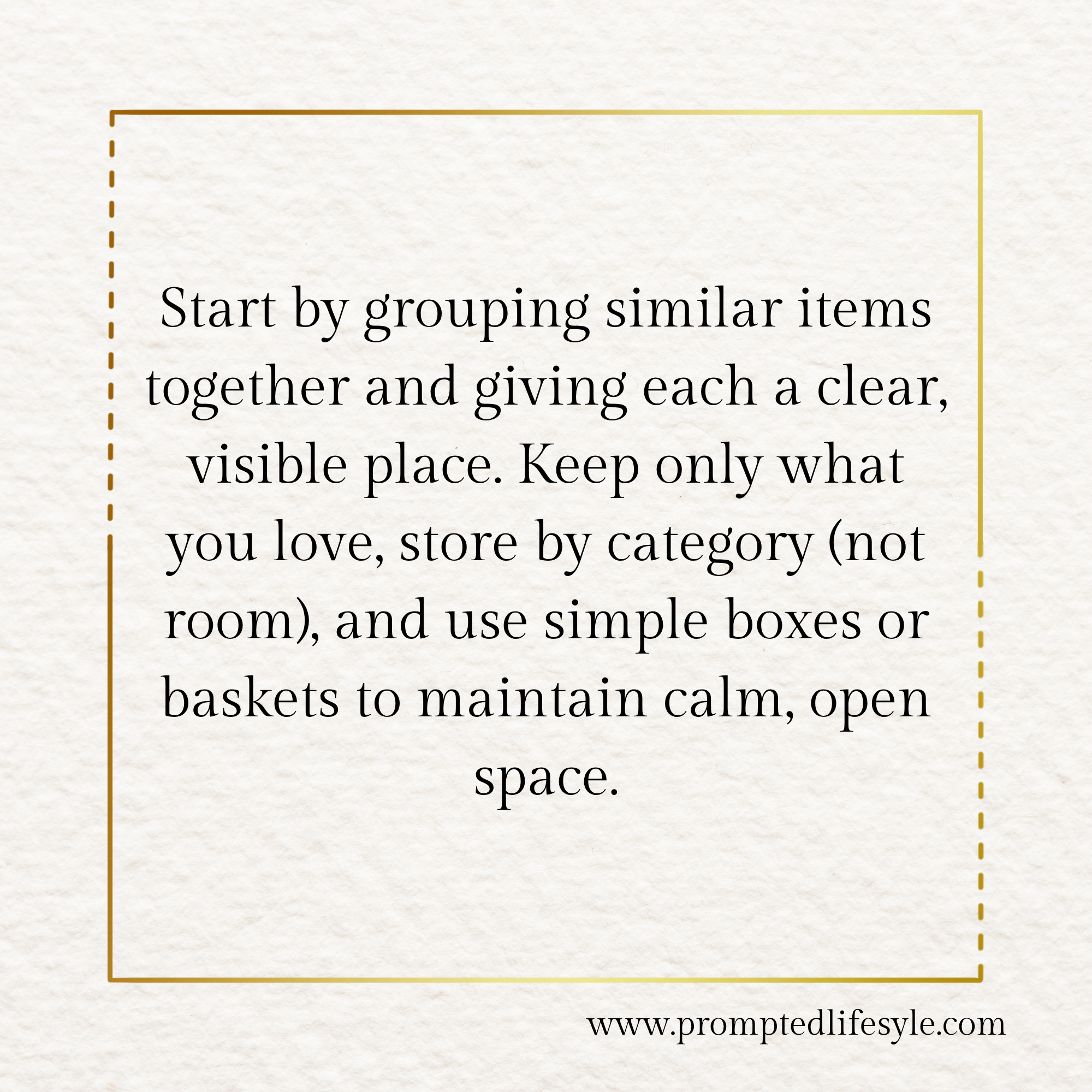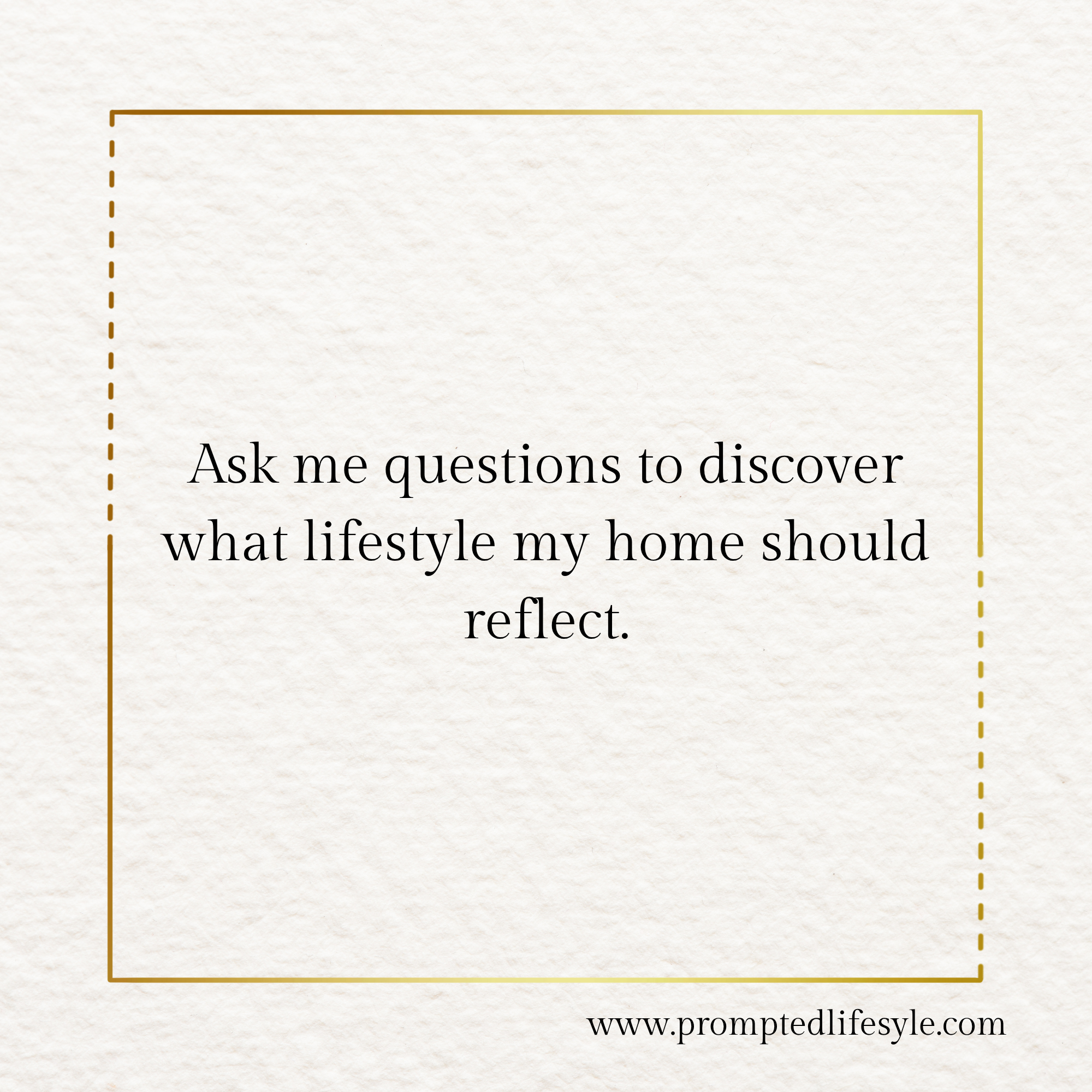How ChatGPT Finally Made the KonMari Method Work for Me
Introduction: The Joy That Got Complicated
When Marie Kondo first said, “Does it spark joy?” I thought, easy enough.
But joy, it turns out, is complicated.
Every time I tried to tidy up, I’d end up surrounded by piles of “maybes.” Things I felt guilty tossing. Things that once made me happy. Things that told a story I wasn’t ready to close.
After years of trying (and failing) to stay decluttered, I decided to bring in an unlikely helper — ChatGPT. Not for lists or spreadsheets, but for emotional support and gentle accountability.
How AI Became My Decluttering Coach
Here’s the truth: decluttering isn’t just physical — it’s emotional labor.
So instead of asking ChatGPT for “organization tips,” I tried something new. I told it exactly what I was struggling with.
“I want to let go of clothes that remind me of a different version of myself. Can you help me process that?”
And it did.
ChatGPT asked questions that were kind, not cold. Things like:
What does that version of you represent?
How can you honor her without keeping every item?
It felt like talking to a patient friend — one who gently guided me back to my values.
💡 Harvard Business Review notes that decision fatigue is one of the main reasons we abandon decluttering projects early — reflective tools like AI can reduce that fatigue by helping us process emotional resistance (source: HBR, 2024).
You may also like: Can AI Really Help Me Decide What to Keep or Toss?
The Emotional Clutter I Didn’t Know I Had
AI helped me realize that clutter wasn’t about stuff — it was about identity.
When ChatGPT reframed items as “chapters of my story,” it became easier to decide which ones to keep.
It even suggested a digital “memory folder” for things I wasn’t ready to toss, turning emotional clutter into something sacred instead of shameful.
This process reminded me: minimalism isn’t about owning less — it’s about owning what matters now.
🧠 According to Psychology Today, emotional attachment to belongings often reflects unprocessed memories or identity shifts — acknowledging that emotion helps you release the item with peace (source: Psychology Today, 2023).
You may also like: How ChatGPT Can Help Me Create a Cozy Home Without Spending Much
What “Sparking Joy” Looks Like with AI
Once I started using ChatGPT prompts before touching a single item, everything shifted.
ChatGPT helped me create a “pre-decluttering ritual”:
5 minutes of reflection
3 deep breaths
1 grounding question: What kind of energy do I want this room to hold?
Suddenly, my home wasn’t just getting cleaner — it was becoming calmer.
The AI didn’t tell me what to keep. It reminded me why I was doing this.
You may also like: How ChatGPT Can Help You Declutter and Simplify Your Space
Free Resources: High-Quality Prompts for Mindful Decluttering
If you want to try this for yourself, here are the exact ChatGPT prompts that helped me finally make peace with my home — and myself. Each one is simple, but surprisingly powerful when you use it with intention.
Start with just one or two, and notice how your mindset shifts from “What should I throw away?” to “What truly supports my life now?”
1. Try saying: “Help me reflect on why I’m keeping items that don’t fit my current lifestyle.”
This one encourages self-awareness instead of guilt. You’ll often uncover memories or fears hiding beneath the clutter.
💡 Pro tip: Record a quick voice note instead of writing — it helps you process emotions faster.
2. “Can you guide me through letting go of sentimental items gently?”
Perfect when you’re struggling to donate something you “should” keep. ChatGPT reframes guilt as gratitude.
💡 Pro tip: Do this at night, when your mind is softer and more reflective.
3. “I want my home to feel calm and warm — what three words describe that feeling?”
This helps you create a vision anchor for every decision you make.
💡 Pro tip: Write those three words on a sticky note and keep it nearby as you declutter.
4. “Can you help me make peace with past versions of myself tied to old things?”
This one feels emotional — and freeing. It reminds you that you can honor who you were without keeping every item.
💡 Pro tip: Journal a favorite memory connected to the object before letting it go.
5. “I’m afraid I’ll regret donating this — can you help me reframe it?”
An essential for anyone who’s ever hesitated with the donation bag halfway open.
💡 Pro tip: Take a photo of the item first; it keeps the memory without the clutter.
6. “How can I create a digital archive for keepsakes I’m not ready to release?”
Blends minimalism with memory beautifully.
💡 Pro tip: Use your notes app to store photos and tag them by emotion — “joy,” “family,” “growth.”
7. “I need a 10-minute daily declutter routine that feels gentle, not harsh.”
This builds consistency without burnout.
💡 Pro tip: Pair it with a soft playlist and set a timer; stopping before you’re tired keeps motivation alive.
8. “Can you remind me why decluttering matters for my emotional health?”
Sometimes you just need a little nudge. This one reconnects you to your deeper “why.”
💡 Pro tip: Revisit it weekly, especially when the clutter starts creeping back in.
How to Use These Prompts as a 10-Minute Evening Ritual
Think of this as your gentle reset, not another chore. The goal isn’t to conquer clutter — it’s to reconnect with your home and yourself, one peaceful pocket at a time.
Here’s what my nightly ritual looks like:
1️⃣ Set the mood. Light a candle or dim the lights. Put on your favorite soft playlist — something that feels like a deep exhale.
2️⃣ Open ChatGPT. Type one of the prompts above — whichever matches your energy that night. Maybe it’s about letting go, or maybe it’s about gratitude.
3️⃣ Reflect, don’t rush. Spend five minutes just talking with the AI. Let it ask you questions. Let your answers unfold.
4️⃣ Take one small action. It could be folding a sweater, clearing a corner, or deleting three old screenshots. The point is movement, not perfection.
5️⃣ Close with intention. Whisper a tiny thank-you — to the item you released, to your space, to yourself for showing up.
Over time, this becomes more than a tidying habit. It turns into a nightly conversation between your heart, your home, and your higher self — gently guided by a few kind words from ChatGPT.
FAQ: Your Questions, Answered
Q1: Can ChatGPT really understand emotions like a human friend?
Not exactly — but it mirrors empathy beautifully. It listens without judgment and reflects your feelings back in words that bring clarity. It’s less about replacing human connection and more about supporting it.
Q2: I’ve tried decluttering before. How is using AI any different?
AI helps you slow down. It asks thoughtful questions and offers emotional phrasing you might not think to use. It’s like journaling — but interactive and encouraging.
Q3: Is it weird to talk to an AI about personal stuff like this?
Honestly? It felt weird at first. But once I realized it was just a tool — a mirror for my thoughts — I found it surprisingly grounding. It made emotional decluttering less lonely.
Q4: Can AI actually help me stay organized long-term?
Yes! You can create simple routines or weekly check-ins with ChatGPT. I have a recurring prompt that says, “Help me review what’s feeling cluttered this week.” It keeps things light and sustainable.
Q5: How can I make this process more spiritual or mindful?
Ask ChatGPT to help you design rituals — like gratitude reflections or energy resets. Small, sacred habits make minimalism feel like self-care, not punishment.
Final Thoughts
Decluttering used to make me feel like I was failing — too sentimental, too attached, too messy.
But with ChatGPT’s gentle prompts, I learned that simplicity isn’t about being perfect. It’s about being present.
So if you’ve ever sat in a pile of “maybes,” know this: you’re not alone — and maybe, all you need is a little AI kindness to help you let go.



